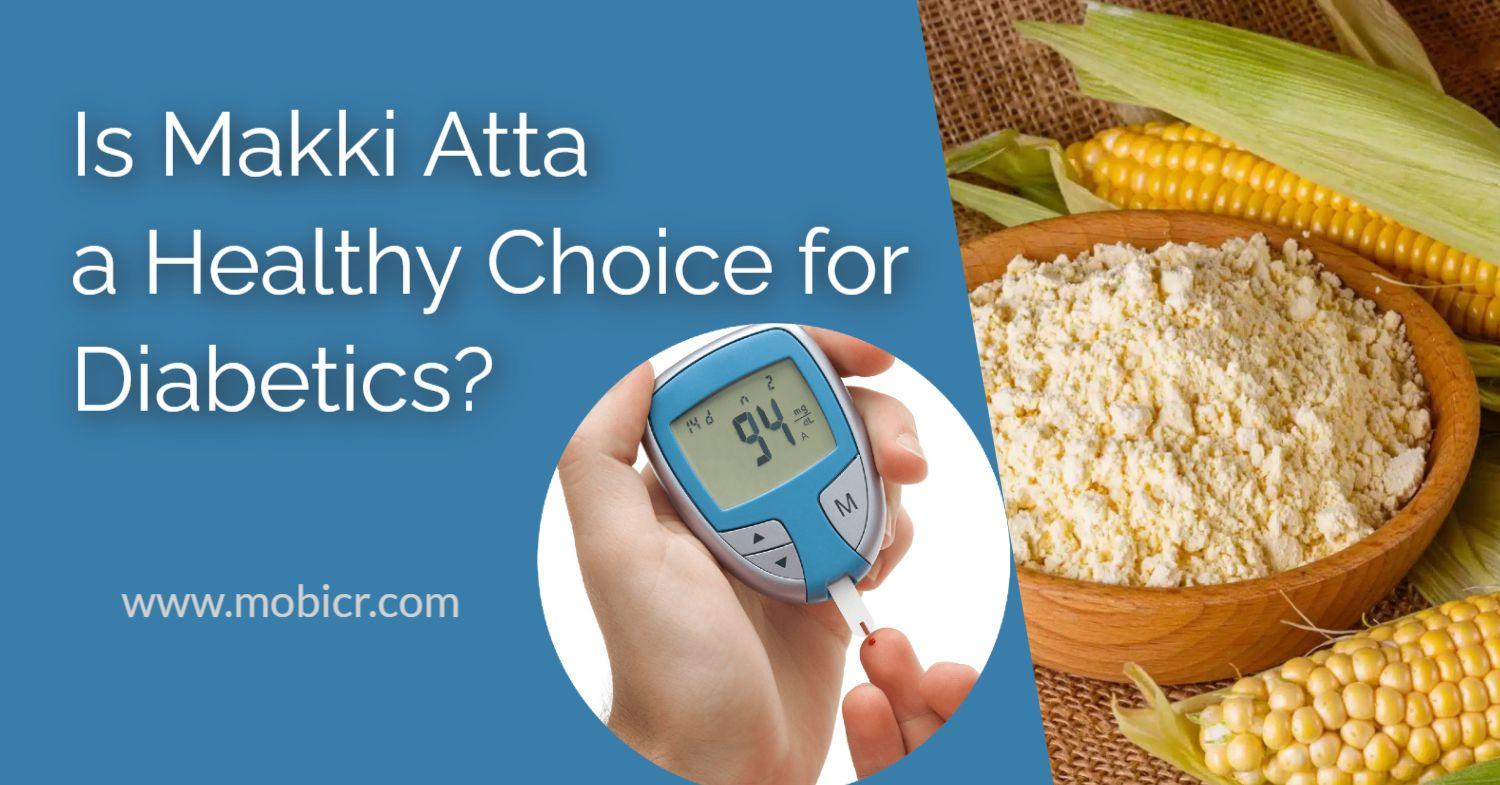
Diabetes is a growing concern worldwide, and choosing the right food plays a crucial role in managing blood sugar levels. Many people wonder: Is Makki Atta (corn flour) a good option for diabetics?
Makki Atta, widely used in Indian kitchens for making Makki ki Roti, is packed with fiber, vitamins, and essential nutrients. But does it support diabetes management, or does it spike blood sugar?
In this blog, we’ll dive deep into the health benefits of Makki Atta for diabetics, its impact on blood sugar levels, and how to include it safely in a diabetes-friendly diet. If you’re looking for a healthy alternative to wheat flour, keep reading!
The glycemic index (GI) measures how quickly a food raises blood sugar levels. Foods with a high GI (above 70) can spike blood sugar, while those with a low GI (below 55) are better for diabetics.
Makki Atta has a moderate glycemic index of around 70, which means:
✔️ It does not cause an extreme spike in blood sugar if consumed in moderation.
✔️ The fiber content slows down sugar absorption, preventing sudden insulin spikes.
✔️ When paired with high-protein and fiber-rich foods, its impact on blood sugar is further reduced.
💡 Tip: To lower the GI, mix Makki Atta with besan (gram flour), soybean flour, or wheat bran. This makes it even more diabetes-friendly!
Makki Atta is not just about taste – it’s loaded with essential nutrients that benefit people with diabetes. Here’s why:
Fiber is essential for controlling blood sugar. Makki Atta contains both soluble and insoluble fiber, which:
Corn flour is packed with antioxidants, such as carotenoids and flavonoids, which:
Magnesium is crucial for diabetics because it:
Unlike refined flours, Makki Atta contains complex carbohydrates, which provide steady energy without sudden crashes. This is beneficial for diabetics, as it prevents extreme highs and lows in blood sugar levels.
Makki Atta has a moderate GI, which means it can raise blood sugar levels if eaten in large quantities. However, when eaten in moderation and paired with fiber-rich vegetables, healthy fats, and proteins, its impact is controlled.
💡 Pro Tip: Instead of eating plain Makki ki Roti, add fenugreek leaves (methi), spinach, or flaxseeds to make it more diabetes-friendly.
The key to diabetes management is portion control. Diabetics can safely consume:
Both Makki Atta and whole wheat flour have unique benefits, but Makki Atta wins for diabetics because:
✔️ Lower gluten content – Easier to digest.
✔️ Rich in fiber and antioxidants – Supports sugar control.
✔️ Better for gut health – Prevents constipation.
However, whole wheat flour has a lower GI than Makki Atta. The best solution? Mix both flours for balanced nutrition!
Makki Atta is best consumed in ways that help regulate blood sugar. Here are some healthy ways to enjoy it:
Yes, Makki Atta can be a healthy choice for diabetics when consumed in moderation and combined with the right foods. It is rich in fiber, antioxidants, and essential minerals that help in managing blood sugar levels, digestion, and heart health.
To make Makki Atta diabetes-friendly:
✅ Control portion sizes – Avoid overeating.
✅ Pair it with protein and fiber – To slow sugar release.
✅ Mix it with other whole grains – To lower GI and enhance nutrition.
If you’re looking for a wholesome and tasty alternative to regular flour, Makki Atta is a smart choice. Try incorporating it into your diet and enjoy better diabetes management with delicious meals!
Tags: Makki Atta for diabeticsglycemic index of Makki Attadiabetes-friendly flourblood sugar controlhealthy Indian floursMakki Atta benefitsgluten-free dietdiabetic food choicesfiber-rich flourbest flour for diabetesIs Makki Atta good for diabetes
Mar 26, 2025 by Himanshu Singh
Feb 24, 2025 by Himanshu Singh
